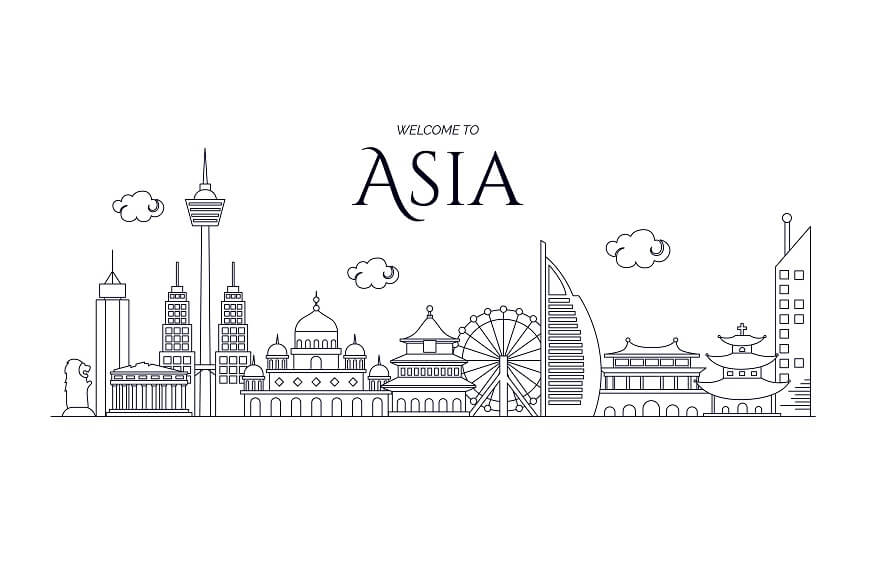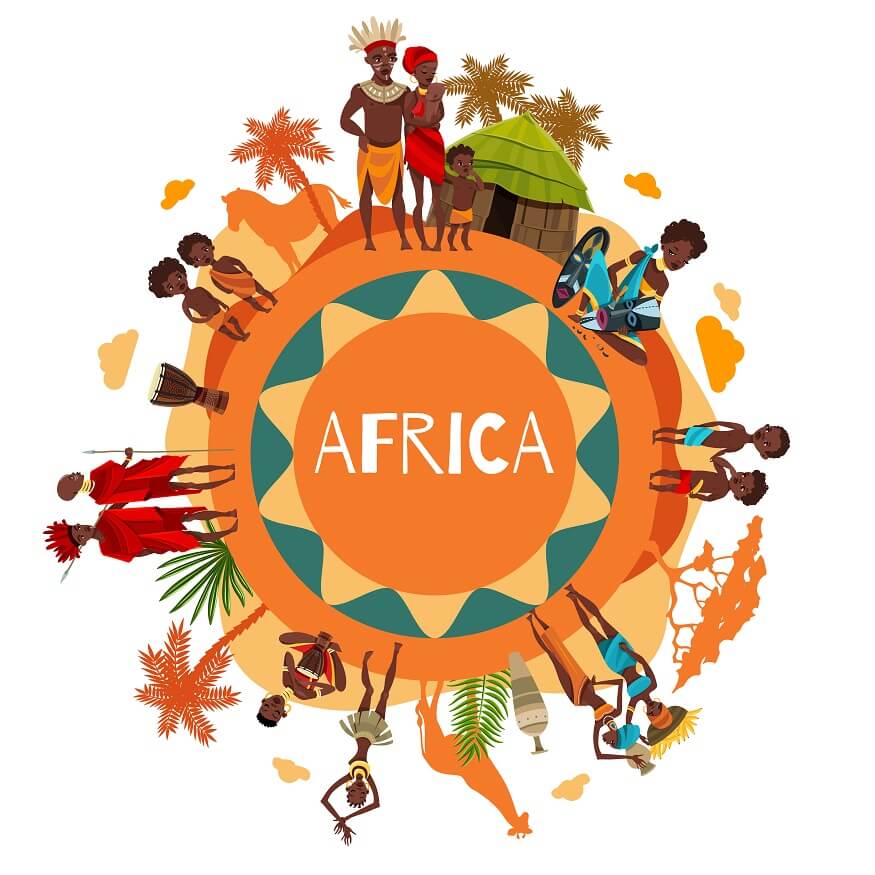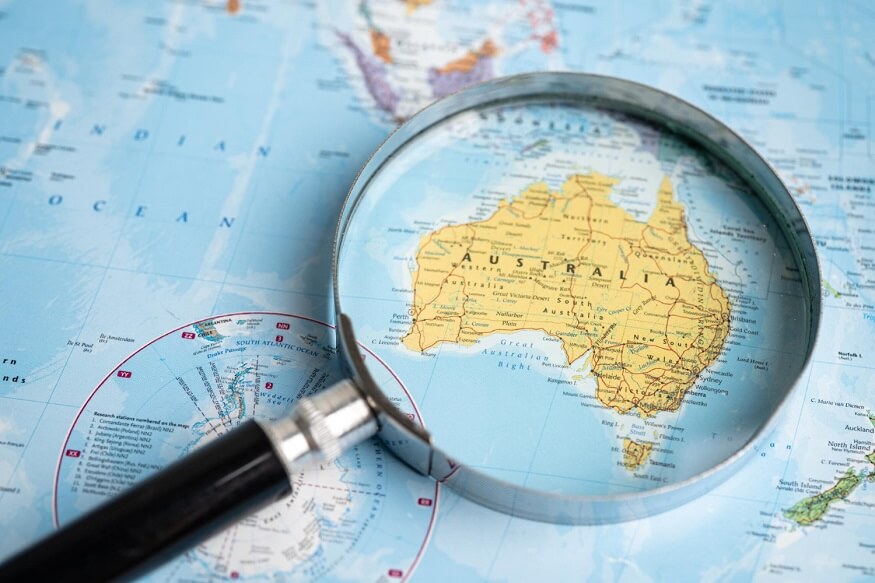Asia is the biggest and most populous continent in the world, and it has a remarkably diverse terrain, a rich cultural heritage, and a very dynamic economy. Asia is home to an incredible variety of languages, faiths, and traditions, making up around 60% of the world’s people and occupying about 30% of Earth’s land area.
The vast expanse of China, the world’s most populated country, is located in the centre of Asia. China has a history that dates back more than 5,000 years, making it one of the oldest continuous civilisations in the world. Today, it is a major economic force in the world, renowned for its vibrant cities like Shanghai and Beijing, magnificent historical structures like the Great Wall, and a plethora of cultural treasures.
Also Read: Top 10 amazing fun facts about Jupiter
India, the world’s second-most populated country, is a dynamic, colourful place with a long history and rich culture. India offers a cultural and geographical kaleidoscope, ranging from the bustle of Mumbai to the peace of Kerala’s backwaters, and from the holy Ganges river to the majestic Himalayas. In addition to being the origin of several important religions, including as Hinduism and Buddhism, it is renowned for its contributions to philosophy, mathematics, and the arts.
Japan is an island country in East Asia that combines hypermodernity with tradition. Japan mixes its rich history with its forward-looking mindset, displaying everything from ancient temples and the traditional art of the tea ceremony to cutting-edge technology. The nation’s culinary legacy, which has been designated by UNESCO as an intangible cultural heritage, is admired throughout the world, as is its sense of aesthetics and design.
South Korea, renowned for its technological innovations and vibrant pop culture (including the global K-pop phenomenon), is another key player in the region. Its capital, Seoul, is a bustling metropolis filled with modern skyscrapers, high-tech subways, historic palaces, and vibrant street markets.
Also Read: Amazing fun facts about Neptune
In Southeast Asia, nations like Thailand, Vietnam, Malaysia, Indonesia, and the Philippines offer a mix of stunning landscapes, ancient temples, colonial architecture, and vibrant cultures. This region is known for its diverse wildlife, lush rainforests, beautiful islands, and delicious cuisine. Indonesia, the world’s largest archipelago, is particularly noted for its cultural diversity and rich ecological resources.
West Asia, often referred to as the Middle East, is rich with history and cultural significance. It is the birthplace of several major world religions, including Judaism, Christianity, and Islam. Countries such as Iran, Saudi Arabia, Israel, Turkey, and the United Arab Emirates each hold their unique charms and challenges, with landscapes varying from vast deserts to fertile river valleys and bustling, modern cities.
Central Asia, a region dominated by the ‘stan’ countries, including Kazakhstan, Uzbekistan, Turkmenistan, Tajikistan, and Kyrgyzstan, is known for its nomadic traditions and the famed Silk Road. The region is a tapestry of ancient cities, towering mountains, and vast, arid landscapes.
Asia also includes the vast wilderness of Siberia in the Russian Federation, home to the frigid tundra of the Arctic Circle in the north and the deep freshwater lake, Lake Baikal, to the south.
Asia’s ecosystems are as diverse as its cultures, ranging from the tropical rainforests of Southeast Asia to the arid deserts of the Middle East, from the highest mountains in the world in the Himalayas to the deepest depths of the Mariana Trench in the western Pacific.
The continent’s economic landscape is equally varied. While it houses several of the world’s largest and fastest-growing economies – such as China, India, and Japan – it is also home to some of the world’s poorest nations. Rapid urbanisation, technological innovation, and economic development are reshaping the continent, bringing both opportunities and challenges.
Also Read: 5 Amazing fun facts about Mercury
Amazing facts about Asia
Here are some interesting facts about Asia that children would love to read:
Size and Population: Asia is the largest and most populous continent on Earth. It covers about 30% of the world’s land area and hosts more than 60% of the world’s current human population.
Geography: It consists of 48 countries, each with its unique culture, languages, and geography. The largest of these is Russia, while the smallest is the Maldives.
Religions: Asia is the birthplace of many world religions including Buddhism, Christianity, Confucianism, Hinduism, Islam, Jainism, Shintoism, Sikhism, Taoism, and Zoroastrianism.
Cultural Diversity: The continent is incredibly diverse, with thousands of unique cultures, languages, and ethnic groups.
Languages: There are over 2,300 languages spoken in Asia. Mandarin Chinese is the most spoken language.
Dead Sea: The lowest point on land, the shoreline of the Dead Sea, is located in Asia.
Mount Everest: Asia is home to the world’s tallest peak, Mount Everest, which is located in the Himalayas and has a height of about 8,848 metres above sea level.
Siberia: Siberia, which occupies about 75% of Russia, is in Asia. Despite its vast size, it’s sparsely populated due to its harsh climate.
Asian Tigers: Hong Kong, Singapore, South Korea, and Taiwan, known as the “Four Asian Tigers”, are known for their impressive economic growth and high-quality education systems.
Also Read: Top 10 Amazing Fun Facts About Earth
Economic Powerhouses: China and Japan are the second and third largest economies in the world, respectively.
Agriculture: Asia produces over 90% of the world’s rice. China and India are the top rice producing countries.
Ganges River: One of the world’s major rivers, the Ganges, is considered sacred by Hindus and is extensively used for spiritual and ceremonial purposes.
Population Growth: By 2050, India is expected to surpass China as the world’s most populous country.
Martial Arts: Many martial arts systems, such as karate, kung fu, judo, and taekwondo, originated in Asia.
The Great Wall of China: The Great Wall, located in China, is the longest man-made structure in the world.
Asian Cuisine: The continent is famous for its diverse and influential cuisines, including Chinese, Indian, Japanese, Thai, Vietnamese, and many others.
Wildlife: Asia is home to diverse wildlife, from the snow leopards of the Himalayas to the komodo dragons of Indonesia.
Arabian Peninsula: The Arabian Peninsula, which includes Saudi Arabia, Yemen, and other countries, is the largest peninsula in the world and is located in Southwest Asia.
Silk Road: Historically, the Silk Road was a crucial trade route connecting the East and West, promoting cultural, commercial, and technological exchange between regions.
Climate: Asia has every possible climate zone — from the driest desert (the Gobi) to the wettest area (Cherrapunji in India), from the coldest region (Siberia) to one of the hottest (the Lut Desert in Iran).
Also Read: Amazing fun facts about Venus
In our Geography curriculum, EuroSchool also promotes the value of critical thinking and problem-solving abilities. These abilities, in our opinion, are crucial for pupils to succeed in the modern world. Our objective is to inform and engage kids as they learn about the world around them. We are aware that we can aid students in gaining a profound understanding of geography by utilising a number of instructional strategies.









